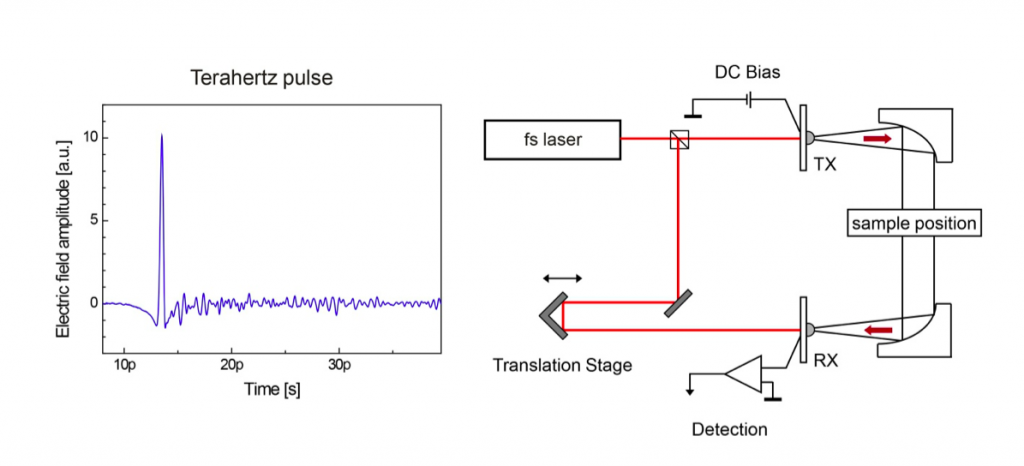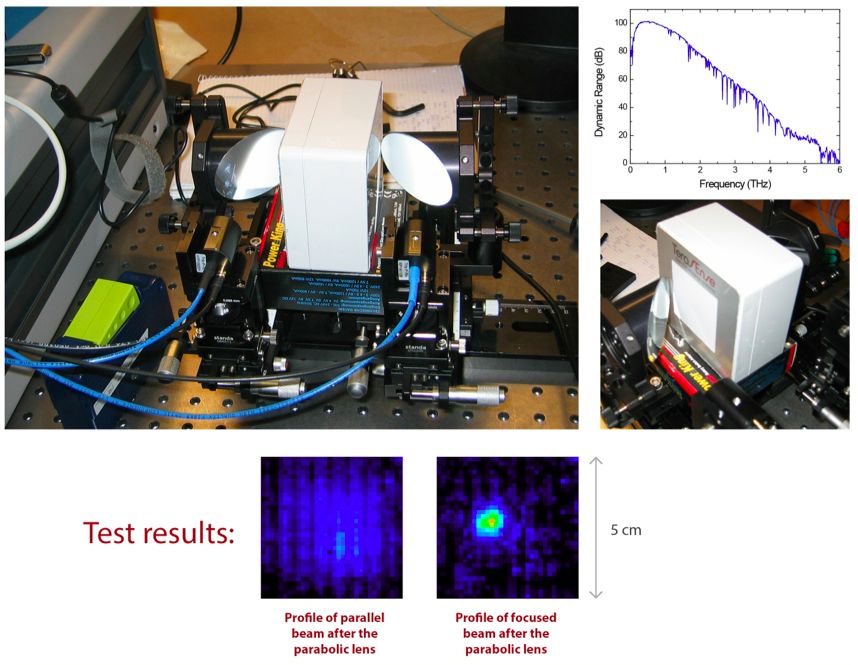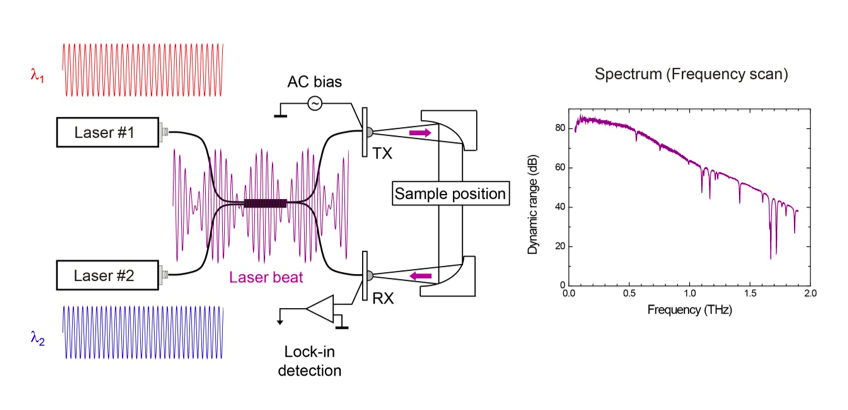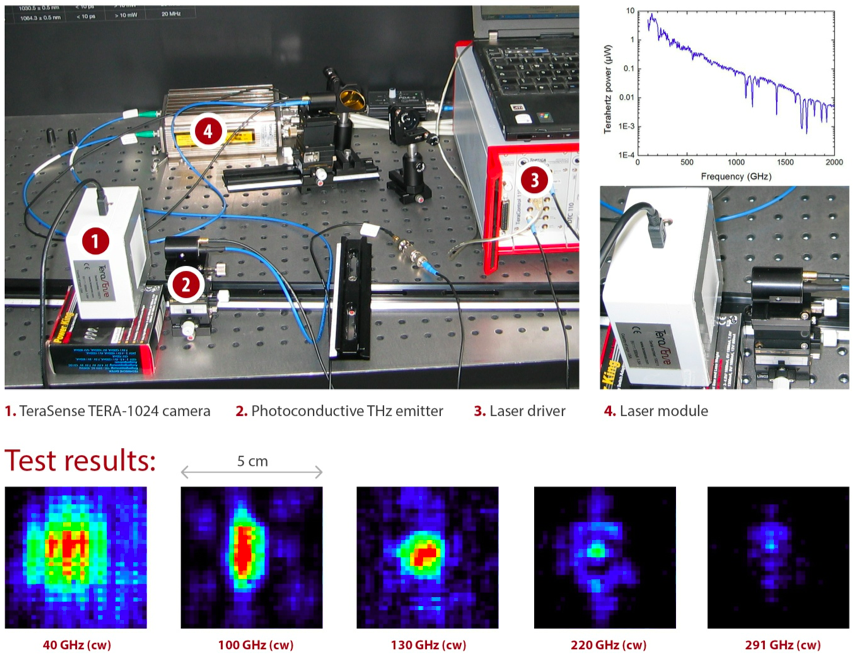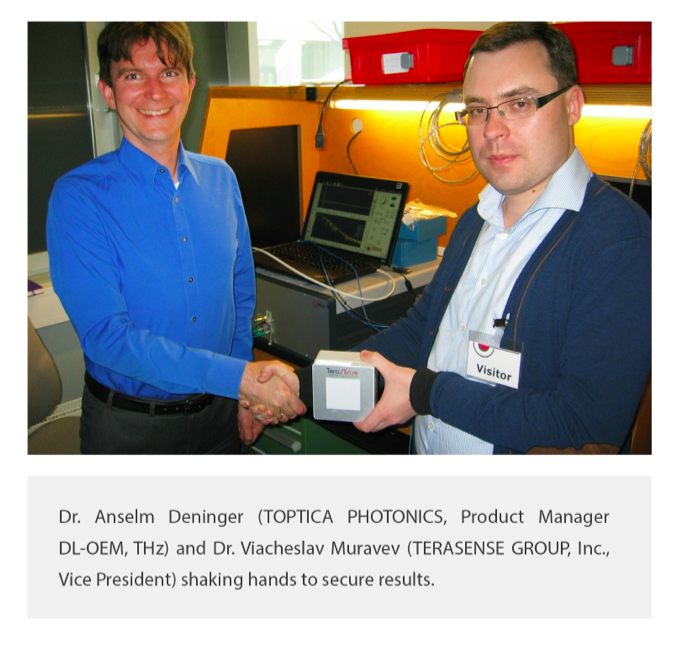Imaging of beams from TDS and FDS spectroscopy systems
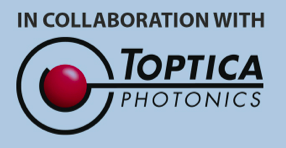 Our terahertz imaging camera is a perfect tool for TDS and FDS beam profile measurement which was proved jointly by TERASENSE and TOPTICA researchers in the course of our R&D project followed by technical meeting held at TOPTICA’s headquarters in Munich, March 19-20, 2015.
Our terahertz imaging camera is a perfect tool for TDS and FDS beam profile measurement which was proved jointly by TERASENSE and TOPTICA researchers in the course of our R&D project followed by technical meeting held at TOPTICA’s headquarters in Munich, March 19-20, 2015.
We are absolutely confident that the results obtained in the course of this mutually beneficial collaboration mark the advent of an entirely new era in the development of TDS and FDS systems – now reinforced with TERASENSE imagers.
Terahertz time-domain spectroscopy (THz-TDS)
Terahertz time-domain spectroscopy is a spectroscopic technique in which the properties of a material are probed with short pulses of terahertz radiation. The generation and detection scheme is sensitive to the effect of sample material on both the amplitude and phase of terahertz radiation. Pulsed terahertz radiation is generated by photoconductive switches (GaAs or InGaAs/InP) irradiated by femtosecond lasers. Aa a result, the actual Fourier transform of terahertz amplitude produces a terahertz spectrum in the frequency range 0.1 – 5 THz.
Test of TeraSense camera operation with TDS system
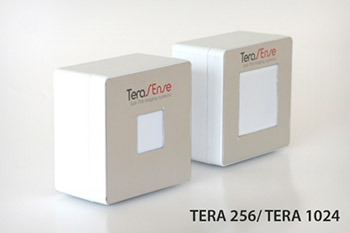
1.5 x 1.5 mm2 pixel size
1 nW√Hz noise equivalent power
Up to 50 frames per second
16×16, 32×32, 64×64 total pixel models
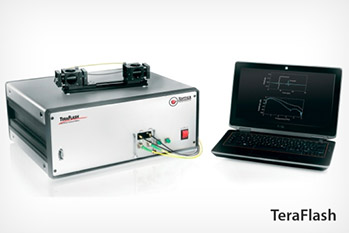
0.1 – 5 THz bandwidth
>90 dB peak dynamic range
Average power 25 uW
100 MHz pulse repetition rate
Terahertz frequency-domain spectroscopy (THz-FDS)
Terahertz frequency-domain spectroscopy is a spectroscopic technique in which the properties of a material are probed with continuous-wave (cw) terahertz radiation. The radiation is obtained by optical heterodyning in high-bandwidth photoconductors: the output of two cw lasers converts into terahertz radiation, exactly at the difference frequency of the lasers. The photomixer is represented by a microscopic metal-semiconductor-metal structure. Applying a bias voltage to the semiconductor structure then generates a photocurrent that oscillates at the beat frequency. The output frequency spans from 50 GHz up to 1.5 THz.
Test of TeraSense camera operation with TDS system

1.5 x 1.5 mm2 pixel size
1 nW√Hz noise equivalent power
Up to 50 frames per second
16×16, 32×32, 64×64 total pixel models
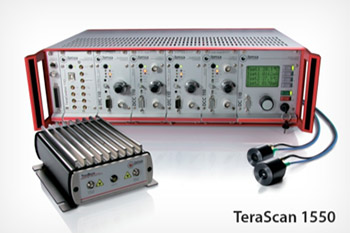
0 – 1.2 THz THz scan range
Frequency accuracy 2 GHz absolute, 10 MHz relative
Power 48 uW (100 GHz), 4 uW (500 GHz)
Up tp 100 GHz/s tuning rate
